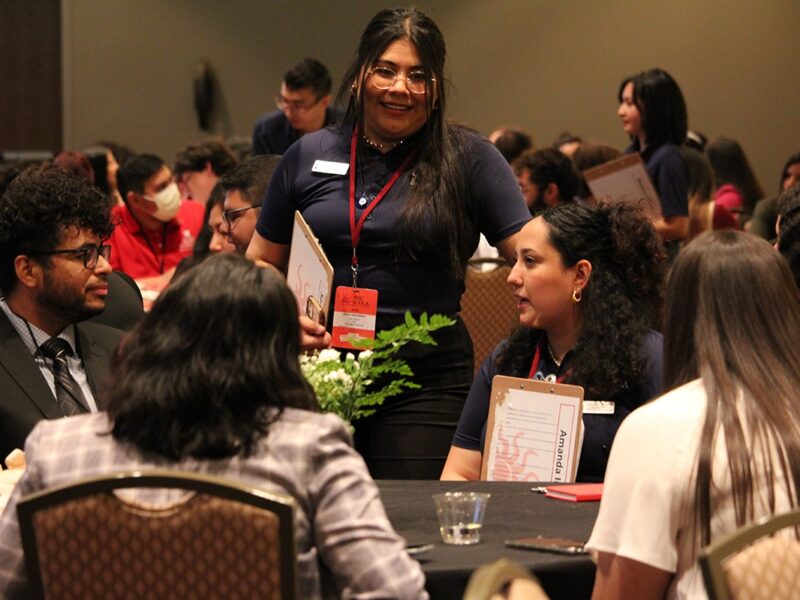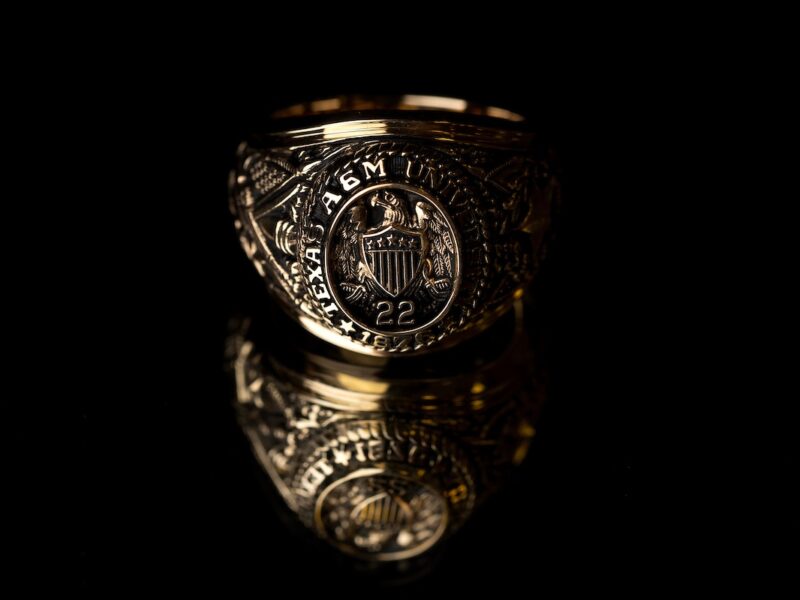Alabama, Aggies Share Legendary Football Connections
 As they prepare to meet this week in Tuscaloosa, Alabama and Texas A&M University have one of the most interesting football coaching connections of any school in any league.
As they prepare to meet this week in Tuscaloosa, Alabama and Texas A&M University have one of the most interesting football coaching connections of any school in any league.
The Crimson Tide certainly has an edge when it comes to national titles: Alabama has won an amazing 14 national championships compared to three for Texas A&M. Both programs are drenched in tradition, and the passion of their fans is legendary which is a good description of the coaches the two universities share.
It all goes back to Paul “Bear” Bryant, one of the towering figures of NCAA coaching. The Arkansas native who was one of 12 children (he got his nickname by wrestling a bear during a theater promotion when he was just 13 years old) played end for Alabama from 1933-35 and then entered the coaching profession with stops at Union, Vanderbilt, coaching military service teams in Georgia and North Carolina during World War II, and on to Maryland and Kentucky.
In 1954, Texas A&M hired him away from Kentucky, where Bryant led the Wildcats to their first-ever SEC title in 1950, and five of his UK teams went on to finish in the Top 20. Bryant arrived on the Texas A&M campus in 1954 and immediately believed his players were too soft and not disciplined, and he devised a plan to toughen them up. That summer, he loaded up his entire team on buses for a three-hour trip to the West Texas town of Junction, at that time a 400-acre adjunct campus of the school, where for the next 10 days they endured all-day practices and contact drills that were unprecedented, with many players eventually quitting in the intense Texas heat.
One “Junction Boy,” as the group came to be known, was Gene Stallings, who would go on to his own coaching fame at both Alabama and Texas A&M. Recalls Stallings of those grueling workouts that resulted in the departure of quite a few players, “We went out there on two buses, and we came back on one, and it was only half full.”
Bryant’s tactics worked: Within two years, the Aggies finished 7-2-1, and the following year, they were 9-0-1 and won the Southwest Conference title. John David Crow won the Heisman Trophy in 1957 under Bryant, becoming the only Heisman winner in Bryant’s coaching tenure. Following the 1957 season, Texas A&M finished 8-3 and played in the Gator Bowl, and days later Bryant was lured away by Alabama to become its head coach in 1958. In Tuscaloosa, Bryant’s stature became truly legendary: In a 25-year career at the school, he won six national titles and 13 SEC championships and Alabama appeared in a record 24 consecutive bowl games. After the 1982 season, Bryant, at age 69, decided to retire.
After his final game that year, Bryant was asked what he would do since he was no longer coaching. He replied, “I’ll probably croak within a week.” He was close four weeks later, Bryant suffered a heart attack and died on Jan. 25, 1983. He was buried wearing only one piece of jewelry a ring given to him several years earlier by the remaining “Junction Boys.” Bryant’s all-time coaching record was 323-85-17, and those 323 wins were the most by any coach at that time.
Stallings, a native of Paris, Texas, played for Texas A&M from 1954-56 and his first coaching job was as an assistant at Alabama under Bryant in 1958 where he stayed for eight seasons. At age 29, after helping Bryant and Alabama win the national title in 1964, he became the Aggies’ head coach in 1965, and two years later in a game that drew national attention, the Aggies and Stallings defeated Bryant’s Alabama team in the 1967 Cotton Bowl. He coached at Texas A&M for seven seasons before joining the Dallas Cowboys as an assistant coach under Tom Landry, where Stallings stayed for 14 years, helping them win Super Bowl XII.
Stallings became the head coach of the NFL’s St. Louis Cardinals in 1986 and was there for four seasons, including the franchise’s move to Arizona. He was named Alabama’s head coach in 1990 where he remained until 1996. His 1992 team finished a perfect 13-0 and won the national title. He completed his tenure at Alabama on Jan. 1, 1997 with a win over Michigan in the Outback Bowl.
“My best memories about Alabama? It would have to be that we won 70 games in seven seasons,” Stallings says from his ranch near Paris. “But I also enjoyed seeing our players have successful careers beyond football. When they got their college diplomas, that was always a big thrill for me personally.”
When asked why Bryant was so successful everywhere he coached, Stallings says the reason “was because everyone wanted to please him. He was a man who could be very intimidating, but one of those people who for one reason or another, everyone deeply respected. You wanted to win because you wanted his approval.”
“After we beat Alabama in the Cotton Bowl back in ’67, coach Bryant and I approached each other on the field to shake his hands. I stuck out my hand, but coach grabbed me and hoisted me up in the air with a big hug. It was a great moment for me. People don’t know it, but he came to our locker room after the game and spoke to our players and shook all of their hands and congratulated them. I will never forget that day.”
Involved in numerous charities and organizations, Stallings served as a member of The Texas A&M University System Board of Regents and is a member of six halls of fame, among them the Texas Sports Hall of Fame.
“There is no question that A&M has proven it belongs in the SEC,” Stallings admits. “With a new coach this year and a new quarterback and new league, they have surpassed everyone’s expectations. They can play with anyone.”
Dennis Franchione also coached at both Alabama and Texas A&M. He was the head coach of the Crimson Tide from 2001-2002 before accepting the job in Aggieland, where he coached from 2003-2007. The Tide finished 7-5 in 2001 and 10-3 in 2002. At Texas A&M, he compiled a 32-28 record and took the Aggies to the Cotton Bowl, Holiday Bowl and Alamo Bowl, but lost all three. In 2001, he became head coach of Texas State University, where he previously had coached from 1990-91, and the team finished 6-6 in his first season at San Marcos. The Bobcats, new members of the Western Athletic Conference, are currently 3-5 this season.
Former Texas A&M coach Jackie Sherrill played for Bryant at Alabama and had the rare opportunity of winning back-to-back national championships in 1964-65. He says Bryant was a great coach “because he communicated well. He always knew exactly what to say, and when to say it. Also, he was a supreme motivator he found a way for every player to improve himself, and that’s a rare talent.
“Bryant had a deep voice and sometimes he could be a little scary to some guys,” Sherrill adds. “He would push his players very hard, so hard that we always said our practices were usually tougher than most of our games. He also stressed speed and quickness, and for that reason, he preferred players who were really not that big. If you look at the roster of many of his teams, you can see that his players were not of immense size, but they were always very quick.”
His greatest coaching lesson learned from Bear Bryant? “To never give up,” Sherrill, now an analyst for FOX Sports Net, says without hesitation.
Sherrill started for Bryant from 1962-65, playing seven different positions while at Alabama. He coached at Texas A&M from 1982-88, winning 52 games in that time span and three Southwest Conference championships.
His thoughts on the game this week between the Aggies and No.1-ranked Alabama: “I think it will come down to A&M’s defensive line against Alabama’s offensive line, which may be the best in the country. (Alabama coach Nick) Sabin always has his players in excellent condition, and you will notice that in most every game, Alabama will wear down a team in the fourth quarter. They just pound and pound you and try to break your will, which often happens. For A&M to win, they will have to find ways for that not to happen.”
Media contact: tamunews@tamu.edu.





